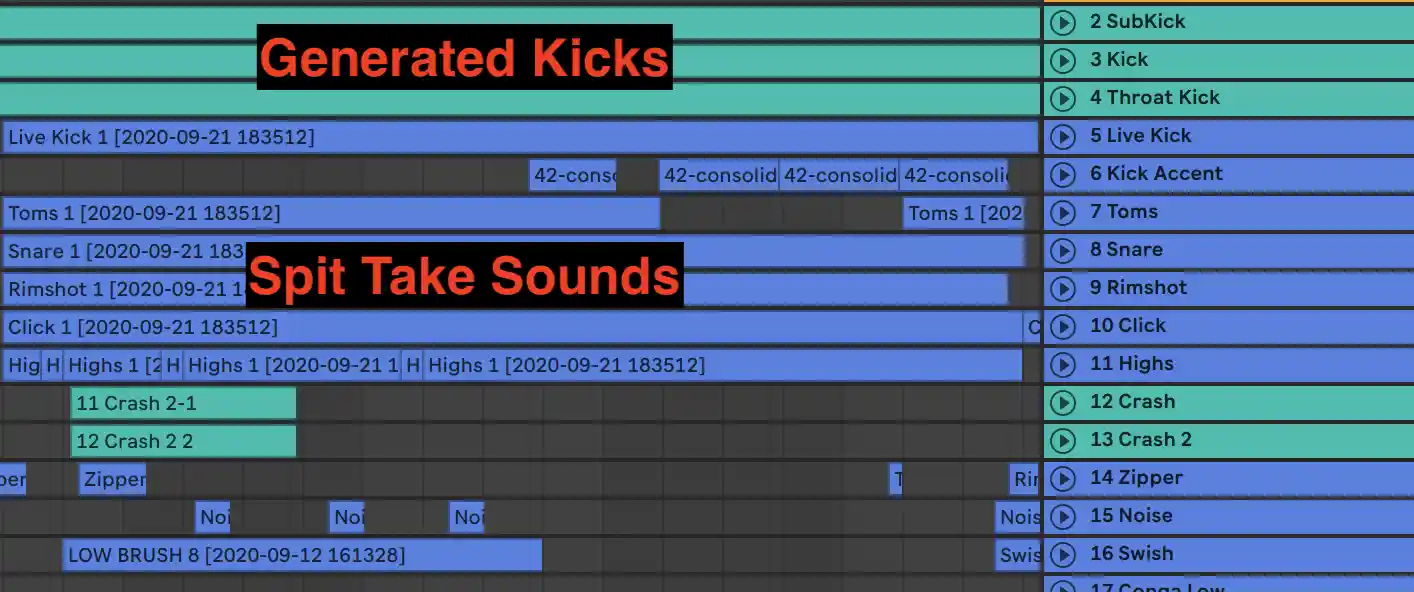VX1 Session: Highwire
This is a session walkthrough, from The Making of VX1
The Process
<Playlist title=“Highwire” tracks=“https://static.bpev.me/notes/vx1-session-highwire/versions.pls”
This is the first song I started writing, and the song that has shaped the direction of VX1’s soundscape the most.
It was written acappella first, and is supposed to be a brash introduction and kind of say “This isn’t a normal acappella album. Be ready.” For a while, I expected it to be the first song on the album.
This song didn’t START this way: it transitioned there. I was initially trying to keep it calm; I think that generally, my arrangments are too impatient, so I tried to slow it down and keep it as a chill tune (v0.01). After a while, though, I realized that I didn’t like the song; It was because this song SHOULD be brash and impatient. I pumped the tempo, and it changed dramatically (v1.0.2). At this point I started centering around the bass rhythm, which was very much inspired by Ariana Grande’s “Into You”.
After this, I recorded a short half-song demo, which is where the song started to really take shape (v1.03).
The songwriting was pretty much complete at this point. The only thing I wasn’t sure about was the solo; I kind of was flipping between singing an affected voice vs featuring one of my violinist friends. I ended up going with the voice because I thought this would be the lead song on the album, and I wanted it to be all vocals… although, it never became that (Mostly because I thought it wasn’t quite flashy enough), so maybe I should have gotten a violinist… oh well!
The Session
In my opinion, creative vowel usage drives this song more than any other song on the album. This is why I use it for a lot of the examples when I touch on the techniques of Creative Vowel Usage and Vocal Instrument Layering.
We even start the song with only a Lead, Kick, and a pad with shifting vowels. And even this verse pad is two layered shifting vowels at once (also notice that these parts are stereo tracks of two takes)!
The first verse and prechorus of this song are really just built on that, with a heavy emphasis on the lead and kick. The only real thing we add during the prechorus is some pads for building into the chorus.
Chorus 1 #
This chorus of this song was definitely one of the instances where I had to time my recording sessions to when no one was home. I tried to sing this very aggressively and loud. My voice got really tired during these sessions.
The chorus is also where we start introducing more active percussion (rather than just a 4-on-the-floor beat). For this percussion, I mostly used a split spit take. The only thing I used my vocal percussion drum machine for was the kicks (for “big-ness”).
Prechorus 2 #
There were three things we added to the 2nd verse/prechorus that make it more active than the first one.
One – The addition of bass. It syncs up with the original pad.
Two – A new secondary pad. It also uses shifting vowels!
Three – More Active Percussion
Basically, since we added all that percussion during the chorus, it’d be hard to take it away cold-turkey without losing a lot of energy. You’d really be able to notice all the high-frequency sounds disappear. So instead, we just switch up the instrumentation a bit. Bill added some new effects, and there we have it! Verse 2 done!
Bridge #
Reeeeally, the bridge is just one long vocal percussion solo. But this is a good time to look at the difference that stereo makes when dealing with percussion spit tracks. For the percussion solo, I didn’t use ANY drum machine, so you can easily hear the difference of a raw spit take vs cleaning up and combining 3 spit takes into a stereo image.
We also added some harmony, because why the fuck not:
Chorus 2 - Big Ending! #
Immabehonest, I had no idea how to end this song, so I just repeated the first chorus, and kept adding stuff until it sounded interesting, and then vamped a solo line on top of it. Basically, here’s all the extra chaos parts:
Next is The Problem!

